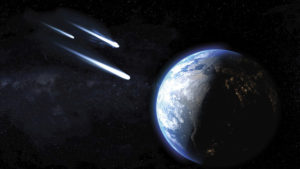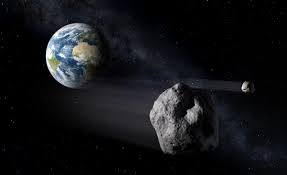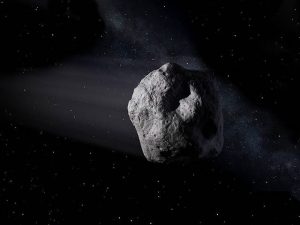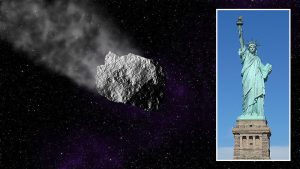

Sputnik News – August 31, 2020
The so-called ‘Near-Earth Object’, classified as such by the US National Aeronautics and Space Administration (NASA), was first discovered by astronomers in 2010, and is set to cross Earth’s orbit on Sunday.
NASA is tracking a massive, 270 metre-wide asteroid that’s nearly double the diameter of the Great Roman Colosseum, and almost twice the height of Egypt’s iconic Pyramid of Giza.
The asteroid, formally known as object ‘465824 (2010 FR)’, is making its way toward Earth’s orbit at an incredible speed of approximately 50,530 km per hour (or 14 km per second), or over 1.5 times faster than what scientists call high-hypersonic speed.
The object, known as an ‘Apollo’ asteroid because it crosses Earth’s orbit, is not believed to be a threat to life on the planet, according to astronomers from NASA’s Center for Near-Earth Object Studies.
Nevertheless, scientists are monitoring space rocks such as 465824 (2010 FR) due to the effects of the gravitational pull of the planets of our solar system, as well as the Sun, which can alter their trajectory.
The asteroid is expected to hit Earth’s orbit on September 6, and will be just one of about ten near-Earth orbit flybys next month. Two such asteroids – 2020 QG5 and 2011 ES4, will arrive on Tuesday. Two more, 2020 PG6 and 465824 (2010 FR) will arrive on September 2 and 6, respectively. NASA expects ten more asteroid flybys in October.
Russia’s space agency Roscosmos commented on 2011 ES4’s approach on Sunday, promising that the planet “won’t die” from the 25 meter diameter space rock as it zips by the planet at a distance closer to Earth than our Moon. According to Roscosmos’s figures, about 80 similar asteroids approached Earth in August.
Astronomers don’t manage to spot every single asteroid that approaches Earth ahead of time. Earlier this month, a 3 by 6 meter asteroid zipped past Earth just 2,950 km above the Indian Ocean.








